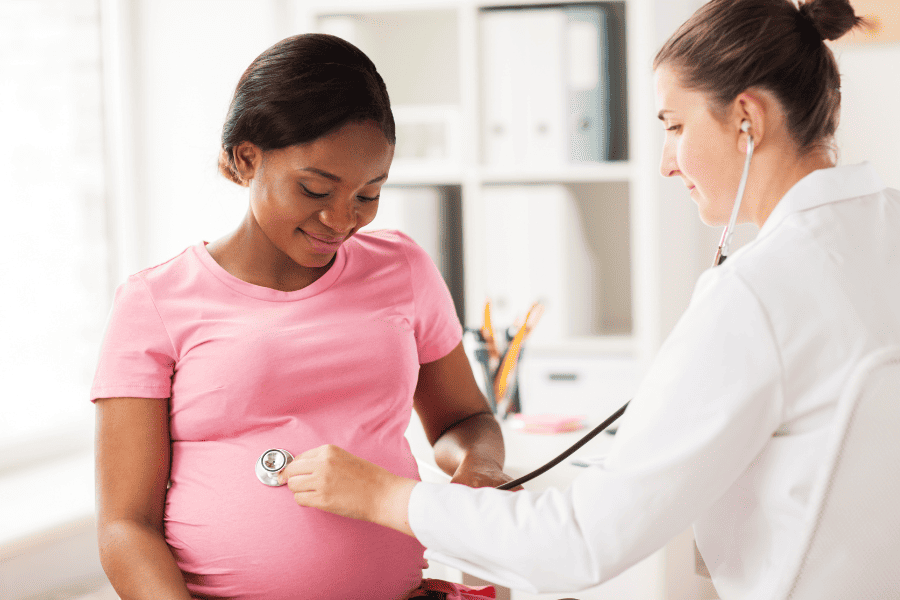 Preeclampsia is probably more common than you realize. Hypertension complications of pregnancy are one of the most common medical problems in pregnancy. Here’s what you need to know to help navigate your pregnancy confidently.
Preeclampsia is probably more common than you realize. Hypertension complications of pregnancy are one of the most common medical problems in pregnancy. Here’s what you need to know to help navigate your pregnancy confidently.
There are many misconceptions surrounding this blood pressure condition during pregnancy. Around 5-8% of pregnancies in the United States are affected by preeclampsia, according to the American Pregnancy Association.
If you are experiencing or have heard of this condition, you will understand what it is, what signs and symptoms to look for, and how to treat it.
Knee Surgery Leads to Long-Awaited Transformation
In Melissa’s words, “For the first time in almost 40 years, I have a stable knee.” The significance of this statement cannot be overstated. The nagging pain and instability that had plagued her for decades were finally becoming a thing of the past. Melissa’s knee surgery marked a turning point in her life, allowing her to reclaim her passions and enjoy life to the fullest.
What is Preeclampsia?
Ann Grider, M.D., FACOG, a board-certified obstetrics and gynecology physician at Women First of Louisville always checks for high blood pressure and preeclampsia during prenatal visits.
Preeclampsia is a hypertensive disorder that emerges during pregnancy. It is characterized by elevated blood pressure (hypertension) and increased protein levels in the urine (proteinuria) among individuals affected. Typically, preeclampsia manifests after the 20th week of pregnancy.
Also known as toxemia, preeclampsia also causes potential organ system issues, frequently affecting the liver, kidneys and the nervous system or brain. While it typically develops after the 20th week of pregnancy, this disorder can even develop after giving birth, known as postpartum preeclampsia.
Current Risks of Preeclampsia
Preeclampsia is a global health issue that affects many mothers and is typically checked during your prenatal visits with your doctor. It contributes to a substantial percentage of maternal deaths worldwide, ranging from 10–15%, often due to associated complications like eclamptic seizures. Preeclampsia is also a big cause of preterm births which comes with its own set of challenges.
While most women with preeclampsia ultimately have healthy babies, if left untreated, this condition can lead to severe health problems for both the mother and baby.
Set Up a Prenatal Visit Calendar to Check for Preeclampsia
Your doctor will check your blood pressure and look for preeclampsia during prenatal visits. Many times your doctor will start picking up early signs of preeclampsia before you start noticing any symptoms. This is because your doctor will check your blood pressure and check your urine for protein the last months of your pregnancy.
If you show signs and symptoms, your doctor will further evaluate you and your baby. The only treatment for preeclampsia is delivery.
Preeclampsia Signs and Symptoms
If you are not regularly checking your blood pressure, preeclampsia symptoms might not be immediately noticeable, unlike some pregnancy-related conditions. Whether you have risk factors or not, consistent check-ups can significantly aid in early detection and management even if you’re not experiencing any unusual discomfort.
Mild preeclampsia symptoms include:
- High Blood Pressure: The primary indicator of preeclampsia is high blood pressure, which may progress slowly or suddenly. To diagnose preeclampsia, your healthcare provider will look for multiple high readings, typically exceeding 140/90 mm Hg, documented on two separate occasions. Therefore, expect to have your blood pressure monitored at every doctor’s appointment during your pregnancy and postpartum.
- Water Retention: Swelling during pregnancy is normal, but unusual or excessive swelling in your legs, hands, or face, beyond your typical experience, should prompt a discussion with your doctor. It is swelling in your brain that can cause preeclampsia headaches and even seizures.
- Protein in Urine: Your healthcare provider will check for protein in your urine (proteinuria) if preeclampsia is suspected. While it’s possible to have preeclampsia without protein in your urine, it’s still a potential indicator justifying the evaluation.
Signs and symptoms of severe preeclampsia include:
- Headaches: Prolonged or severe headaches that persist can be a sign of preeclampsia, warranting immediate medical attention.
- Nausea: Beyond typical morning sickness, excessive nausea, vomiting, or dizziness should be monitored closely, as these can indicate preeclampsia.
- Vision Changes: Any alterations in vision, such as light sensitivity, seeing spots or flashing lights, or blurred vision, should be promptly reported to your healthcare provider. Floaters are common and are not usually preeclampsia visual changes.
- Abdominal Pain: Discomfort in the abdomen, especially on the right side near the ribs, or shortness of breath can be red flags for severe preeclampsia. This is from liver swelling.
- Infrequent Urination: Noticeable changes in your urination patterns, especially if they become less frequent than usual, should be discussed with your healthcare provider.
How is Preeclampsia Treated?
 The only treatment for preeclampsia is delivery. This is a problem when you are preterm or less than 37 weeks. Your doctor will often try to monitor you and your baby to try to safely get your pregnancy to term or 37 weeks.
The only treatment for preeclampsia is delivery. This is a problem when you are preterm or less than 37 weeks. Your doctor will often try to monitor you and your baby to try to safely get your pregnancy to term or 37 weeks.
If preeclampsia is detected earlier in your pregnancy, the Mayo Clinic reports that treatment options are available:
- Increased Monitoring: Your healthcare provider will closely monitor you and your baby, involving more frequent appointments for blood pressure checks. You might also need to monitor your blood pressure at home, and additional tests like blood tests, ultrasounds, dopplers, and nonstress tests may be part of your care plan. In some cases, hospitalization for constant monitoring may be recommended for a specific period or until delivery.
- Kick Counts: Regular tracking of your baby’s movements, known as kick counts, helps ensure that any unusual activity is promptly detected. If you’ve been diagnosed with preeclampsia, you may be asked to perform kick counts daily and report the results to your healthcare provider.
- Blood Pressure Medication: Antihypertensive drugs may be prescribed to control blood pressure before and after delivery. These medications are approved for use during pregnancy.
- Steroids: In severe cases of preeclampsia, corticosteroids can help enhance liver and platelet function and mature the baby’s lungs for an early delivery.
- Anti-Seizure Medication: Drugs such as magnesium sulfate may be given before or after delivery to lessen the chance of seizures, which can be a potential complication of preeclampsia when blood pressure rises too high. This intravenous medication can cause drowsiness, flushing, sweating, and headaches. It can temporarily affect your breastfeeding abilities, but these effects are typically short-lived.
Looking for a Pregnancy Doctor in Louisville?
Talk to the Women First team and get advanced healthcare for your pregnancy.
If you need advice during your pregnancy or have questions about preeclampsia, do not hesitate to make an appointment.
